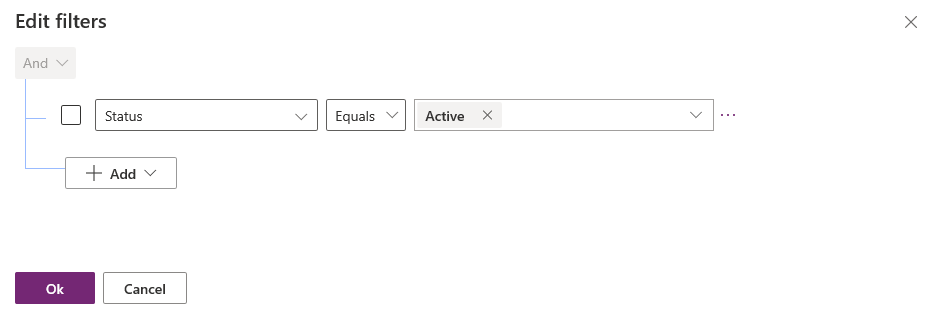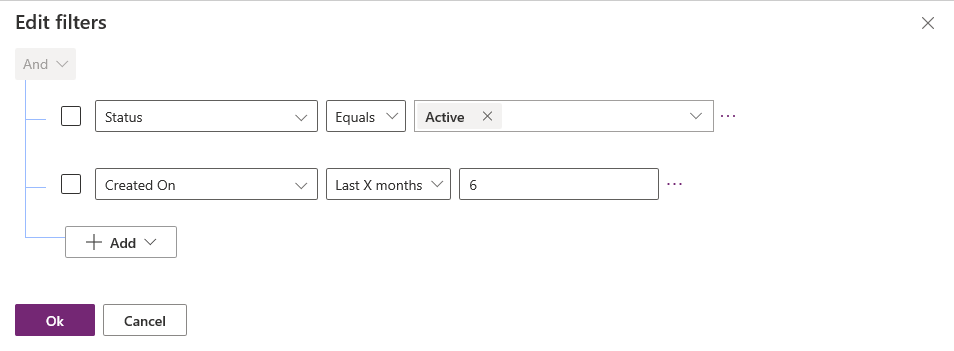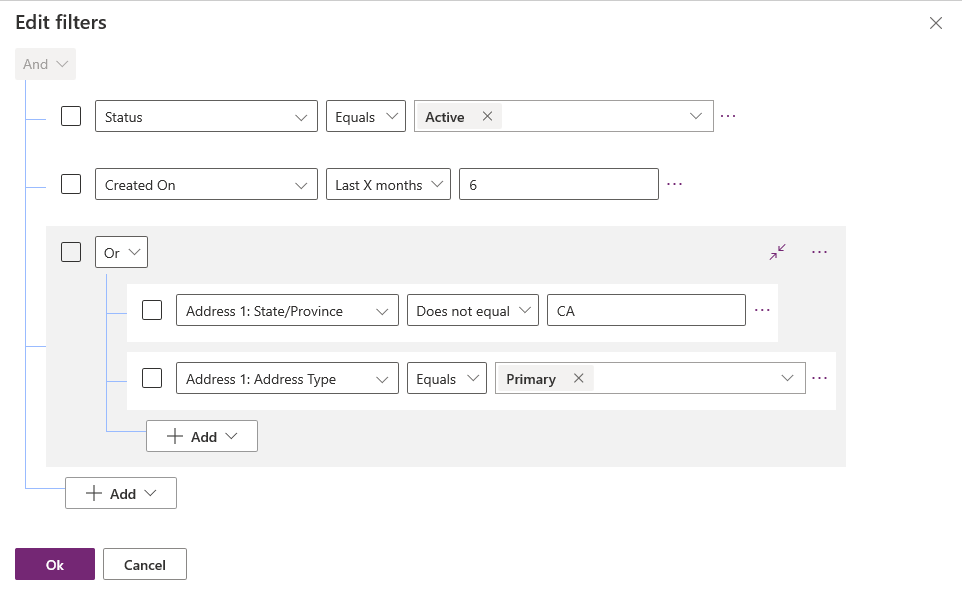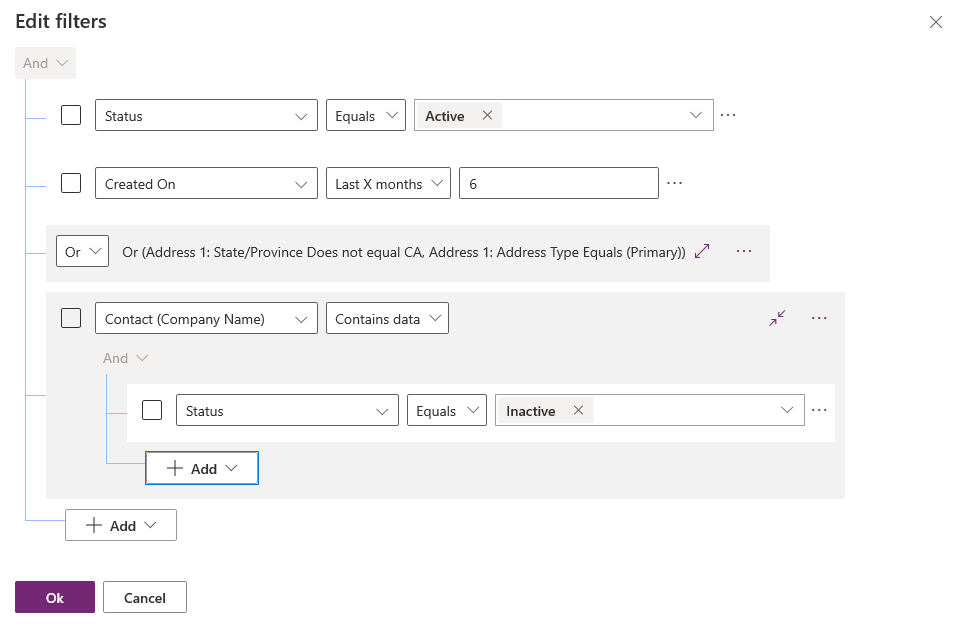Create or edit filters in model-driven app views
The filters in a Power Apps view define the records that a user is able to see when selecting the view for the current table. You can add or edit a filter for the columns that you include in a view by selecting the column and selecting Filter by in the view designer.
You can also use the expression builder in the view designer. Use the expression builder to add or edit filters for any columns of the table in the current view or any columns in a related table.
In this article, you create or edit filters by performing the following tasks:
- Edit or remove a filter condition
- Open the expression builder
- Add conditions to a filter
- Add a group condition to a filter
- Add a related table to a condition
- Group conditions of a filter
Edit or remove a filter condition
Sign in to Power Apps.
On the left pane, select Solutions, and then open the solution you want.
Open the table that you want, and then select the Views area.
Open the view that you want to edit. The view properties panel lists existing filters.

On the view properties panel, select a filter condition.

Select the conditional operator that you want to use.
Type or select the comparison value for the condition.
Select Apply.
To remove a condition, select Close. The condition is removed without confirmation.
Open the expression builder
Use the expression builder to redefine existing filters and add additional clauses.
On the view properties right panel in the view designer, select Edit filters.

Add conditions to a filter
In the expression builder, select Add > Add row.
Select a column for the condition.
Select a conditional operator.
Select a comparison value.
Some filter conditions don't require a comparison value for the condition. For example, the operator Contains data doesn't require a comparison value. With other filter conditions, you choose the comparison value from an option set. For example, the Status column has the values Active and Inactive.

Select OK.
Add a group condition to a filter
In the expression builder, select Add > Add group.
Select the relational operator Or for the group. And is the default relational operator.
Specify the first clause of the grouped condition. Select the column, conditional operator, and comparison value.
Select Add > Add group.
Specify the second clause of the grouped condition.

You can select Collapse to display the group as a conditional expression.
Add a related table to a condition
In the expression builder, select Add > Add related table.
Select a column from the current table that is related to another table. The table related to the column is shown in parenthesis. You can select columns that have a many-to-one, one-to-many, or many-to-many relationship with the related table.
Select a column of the related table for the condition.
Select a conditional operator.
Note
Contains data is the only conditional operator that can be used with a related table in a view filter.
Select or enter a comparison value.

Group conditions of a filter
In the expression builder, select the check box for the conditions that you want to group.
Select More commands (...) for one of the conditions, and then select Make group.
To ungroup a group, select More commands (...) for the group, and then select Ungroup

Next steps
Configure sorting in views
Converting views into editable grids